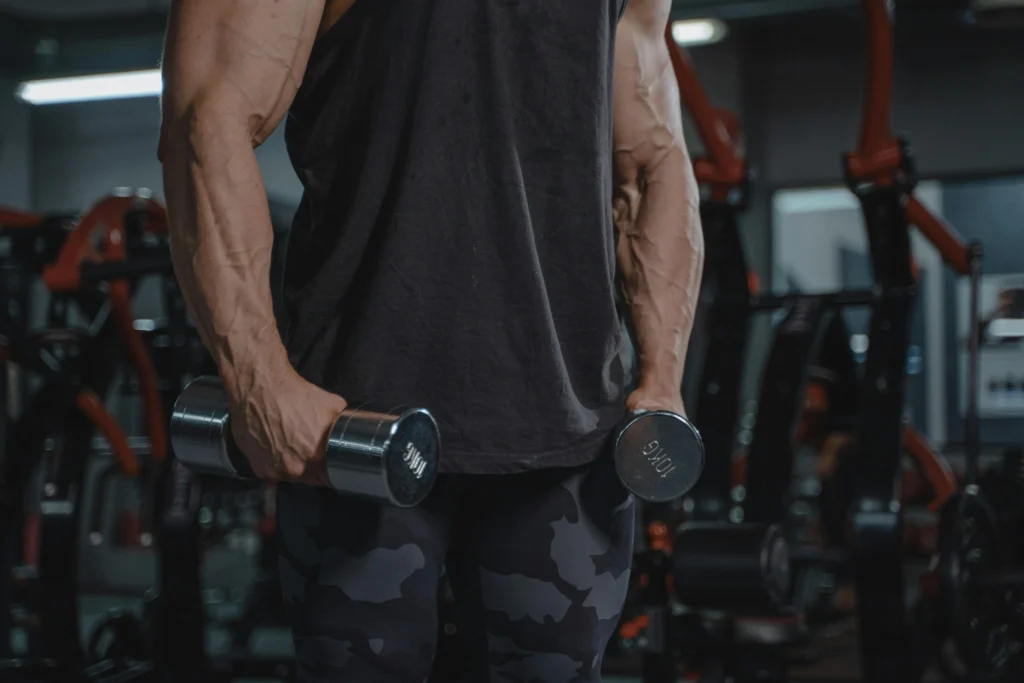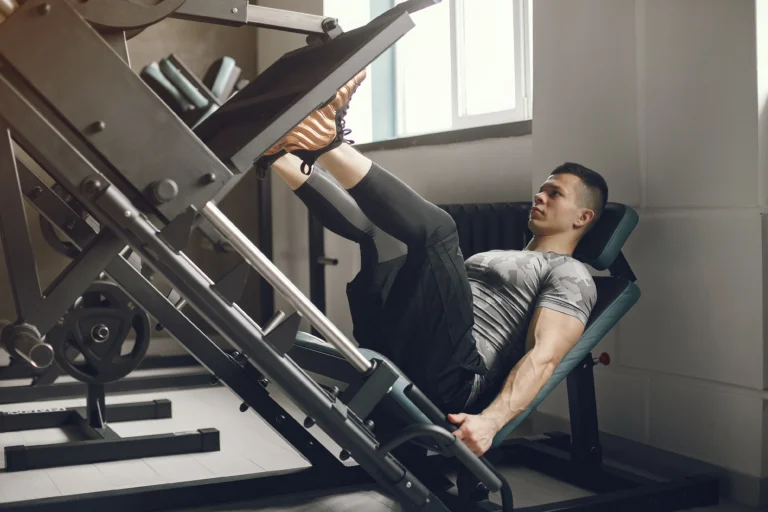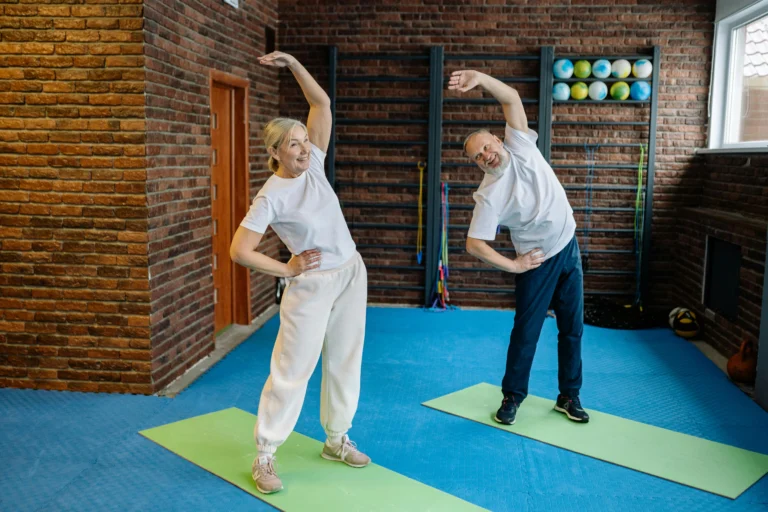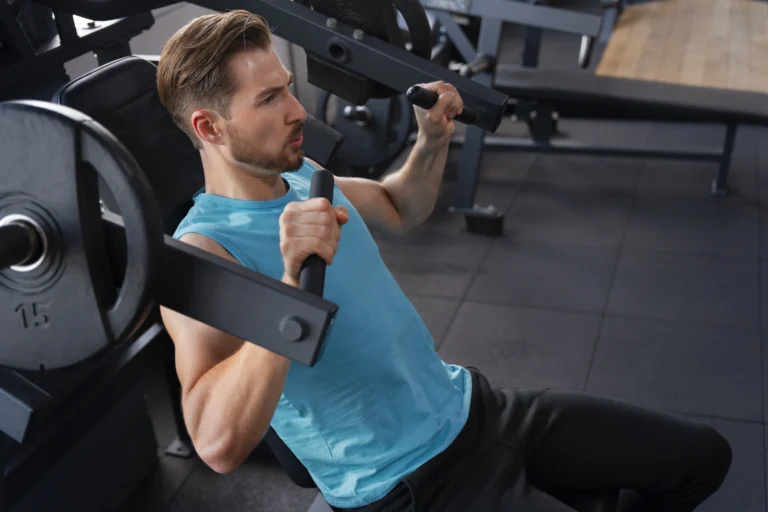Pull Day Exercises: Best Back and Biceps Workout Guide
Every fitness journey has a moment when you see strength isn’t just lifting weights. It’s about knowing your body’s full potential. For me, this moment came during a tough pull day workout. It changed how I see back and biceps training.
Pull day exercises are key to building muscle. They focus on your back and biceps. These exercises do more than build muscle. They help create a balanced, strong body that works well in sports and daily life.
Whether you’re new to fitness or have been working out for years, pull day exercises can help you get stronger. The science shows that working on back and biceps together is the best way to grow muscle. It makes your workouts more effective.
Table of Contents
Key Takeaways
- Pull day exercises target multiple muscle groups simultaneously
- Compound movements provide superior strength and muscle development
- Proper technique is crucial for preventing injury and maximizing results
- Back and biceps training can be integrated into various workout splits
- Consistent training leads to significant strength and muscle growth
Understanding Back and Biceps Training Synergy
Training back and biceps together is a smart workout strategy. It helps grow muscles faster and more efficiently. Your muscles work together during pull exercises, making this combo effective.
Benefits of Training Back and Biceps Together
Training back and biceps together has many benefits:
- Reduces overall workout time
- Improves muscle group coordination
- Enhances recovery between training sessions
- Maximizes metabolic stress and muscle activation
Muscle Group Integration During Pull Exercises
When you do lat pulldowns and seated cable rows, your biceps help out. This teamwork means you’re working many muscles at once. It’s a great way to build strength.
“Muscle groups don’t work in isolation – they work as an integrated system.” – Strength Training Expert
Optimal Training Frequency
Research shows you should train these muscles 2-3 times a week for best results. Here are some tips:
- Do 6-8 reps for big back exercises
- Use 10-15 reps for smaller movements
- Do about 10 hard sets per muscle group weekly
By understanding how back and biceps work together, you can create better workouts. These workouts help you build balanced strength and muscle.
Essential Equipment for Pull Day Workouts
You don’t need to spend a lot to have a great pull day workout. A few key pieces of gear can help you build a strong back and biceps.
- Dumbbells for versatile straight-arm pulldown techniques
- Barbells for comprehensive strength training
- Cable machines for targeted muscle isolation
- Pull-up bar for bodyweight exercises
- Resistance bands for supplemental training
Knowing about different biceps curl grip varieties can make your workouts better. The right gear lets you work muscles from different angles. This ensures you build muscles fully.
| Equipment | Primary Muscle Groups | Recommended Exercises |
|---|---|---|
| Dumbbells | Biceps, Back | Rows, Curls, Pullovers |
| Cable Machine | Lats, Biceps | Pulldowns, Cable Curls |
| Pull-up Bar | Back, Biceps, Core | Pull-ups, Chin-ups |
“The right equipment transforms an ordinary workout into an extraordinary muscle-building experience.” – Strength Training Experts
If you work out at home, start with the basics and add more as you go. Choose quality, versatile pieces that let you do many exercises.
Pull Day Exercises for Maximum Back Development
To build a strong back, you need the right exercises and how to do them well. Your back muscles are important for strength, posture, and sports performance. Knowing how to work on different muscles can change your workout.
For a good back workout, mix compound and isolation exercises. These exercises work many muscles at once.
Comprehensive Compound Back Exercises
Compound exercises work many muscles at once. They help build strength and muscle. Key exercises include:
- Trap bar deadlift progressions
- Barbell rows
- Pull-ups
- Seated cable rows
Strategic Isolation Back Movements
Isolation exercises focus on specific back muscles. They help shape muscles and fix weak spots.
- Face pull intensity methods
- Single-arm dumbbell rows
- Incline dumbbell rows
- Lat pulldowns
Form and Technique Optimization
“Proper technique trumps heavy weights every time” – Professional Strength Coaches
To get the most out of your back workout and avoid injuries, follow these tips:
- Keep your spine straight during exercises
- Control the weight through the whole movement
- Focus on squeezing the muscles, not just lifting
- Gradually add more weight and harder exercises
| Exercise | Sets | Reps | Focus |
|---|---|---|---|
| Barbell Rows | 3-4 | 6-8 | Strength |
| Pull-ups | 4 | 6-8 | Muscle Engagement |
| Seated Cable Rows | 3-4 | 10-15 | Muscle Endurance |
Remember, being consistent and progressing slowly is key to a strong, defined back.
Mastering Biceps Training Techniques
Building strong biceps takes more than just lifting randomly. The grip you use in biceps curls is key to muscle growth and arm strength. Learning different techniques can make your workouts much better.

Good biceps training means using a smart approach and changing things up. Here are some important tips:
- Do 3 sets of 12 reps each time
- Try different biceps curl grip styles
- Focus on the right form and muscle use
- Keep adding more weight over time
Your bicep workout should hit muscles from different angles. Each curl type works a unique part of the muscle:
| Curl Type | Primary Muscle Targeted | Difficulty Level |
|---|---|---|
| Hammer Curls | Brachialis | Beginner |
| Preacher Curls | Long Head Biceps | Intermediate |
| Concentration Curls | Short Head Biceps | Advanced |
“Muscle growth happens through strategic variation and consistent challenge” – Strength Training Experts
For those who lift a lot, try pyramid sets and negative reps to make muscles work harder. Always breathe right: breathe out when curling up and in when lowering.
Adding rear delt fly positions to your routine helps other muscles too. This mix of exercises keeps your arms growing and stops you from getting stuck in a routine.
The Push-Pull-Legs Training Split Structure
The Push-Pull-Legs (PPL) training split is a great way to organize your workouts. It helps you grow muscles and recover well between sessions.
Weekly Training Schedule Options
You can adjust your PPL training to match your fitness goals and schedule. Here are the main options:
- 3-Day Split: Great for beginners
- 4-Day Split: For those who want a bit more challenge
- 6-Day Split: Best for advanced trainers
Each split focuses on different muscle groups. This includes pull day exercises and compound back exercises, all done in a strategic order.
Recovery Considerations
Recovery is key in any workout plan. Your muscles need time to heal and get stronger after hard workouts.
| Training Level | Rest Days | Training Frequency |
|---|---|---|
| Beginner | 1-2 days between sessions | 3 days per week |
| Advanced | Active recovery or light training | 5-6 days per week |
Progressive Overload Methods
To keep growing, you need to keep pushing your muscles. Progressive overload means slowly increasing the intensity of your workouts. This can be done by:
- Increasing weight
- Adding more reps
- Shortening rest times
- Making exercises more complex
“The key to continuous improvement is systematic progression.” – Strength Training Expert
Using these methods will help you improve your pull day exercises and grow muscles consistently.
Building Your Pull Day Workout Routine
Creating a good pull day workout needs careful planning and knowing how muscles work together. Your routine should hit key muscle groups, balancing hard workouts and rest. Exercises like lat pulldowns and seated cable rows are key for a strong back and biceps.
- Target muscle groups: Back, biceps, and supporting muscle regions
- Exercise selection: Compound and isolation movements
- Training volume: 4-5 sets per exercise
- Rep ranges: 8-15 repetitions
A good pull day workout might look like this:
- Lat pulldown workouts (4 sets, 10-15 reps)
- Seated cable row variations (4-5 sets, 8-12 reps)
- Chin-ups or pull-ups (3-4 sets, 6-12 reps)
- Bicep curls (3 sets, 10-15 reps)
“The key to an effective pull day is balance and progressive overload.” – Strength Training Experts
Remember, your fitness level will guide your workout changes. Beginners should start with lighter weights and focus on form. Advanced lifters can try harder techniques like drop sets or time under tension.
Rest times between sets are important. Aim for 2-3 minutes to help muscles recover and grow stronger. Your pull day should push your muscles but avoid overdoing it.
Advanced Training Variations and Intensity Methods
To take your pull day workout to the next level, you need to add intensity techniques. These methods challenge your muscles and help you break through plateaus. Professional athletes and experienced lifters use these advanced methods to grow their muscles and work out more efficiently.
Using advanced training variations can greatly improve your muscle-building potential. Studies show these techniques can significantly boost muscle growth and make workouts more effective.
Drop Sets and Supersets for Muscle Growth
Drop sets are a powerful way to build muscle. A study with 142 participants found that drop sets can cut muscle hypertrophy training time by a third compared to traditional methods.
- Start with your standard weight
- Perform repetitions until muscle failure
- Immediately reduce weight by 20-30%
- Continue performing repetitions
Time Under Tension Techniques
Changing how you do straight-arm pulldowns can greatly improve muscle stimulation. By controlling the tempo of your reps, you increase muscle stress and growth potential.
| Technique | Rep Tempo | Muscle Impact |
|---|---|---|
| Slow Eccentric | 4 seconds down | Increased muscle damage |
| Paused Reps | 1-2 second hold | Enhanced muscle activation |
Rest-Pause Training for Intensity
Rest-pause methods, especially with face pull intensity, can push your muscles beyond usual limits. This technique involves short rests between intense sets, maximizing muscle fiber recruitment.
“Advanced training techniques are not just about lifting more weight, but about creating more muscle stress and stimulation.” – Professional Strength Coach
By adding these advanced techniques to your routine, you’ll challenge your muscles in new ways. This can help you grow your muscles faster and overcome stubborn plateaus.
Common Mistakes to Avoid During Pull Exercises

Mastering pull exercises is more than just lifting weights. Almost 90% of people struggle with pull-ups, showing how important proper technique is. Knowing and fixing common mistakes can greatly improve your workout and prevent injuries.
Many athletes make big errors in trap bar deadlift progressions. These mistakes affect their form and how well they work their muscles. Key mistakes include:
- Using momentum instead of controlled muscle strength
- Neglecting proper breathing techniques
- Improper body alignment during lifts
- Overlooking range of motion in rear delt fly positions
“Technique trumps weight every single time in strength training.” – Professional Strength Coach
Your breathing is key to how well you do in exercises. About 25% of people hold their breath during pull exercises, which lowers their workout’s effectiveness. Inhale during the preparation phase and exhale during the exertion to get the most out of your muscles and oxygen.
In rear delt fly positions, aim for precise muscle targeting. Don’t swing or use momentum. Focus on controlled movements that target the specific muscles. This method ensures you work the muscles right and lowers injury risk.
For trap bar deadlift progressions, keep your spine neutral and engage your core. Keep your shoulders back and avoid rounding your back. These details help prevent strain and improve your lifting.
- Keep your core tight
- Maintain a neutral spine
- Control the weight during both lifting and lowering phases
- Use a full range of motion
Getting your technique right takes time and practice. By focusing on these key points, you’ll get stronger and more efficient in your pull exercises. This will lead to better results and lower injury risk.
Recovery and Nutrition for Back and Biceps Growth
Recovery and nutrition are key for the best results from pull day exercises and biceps curls. Your muscles grow when you rest well, eat right, and train smart.
“Muscle development happens during recovery, not during the workout itself.” – Professional Strength Coach
Good recovery means several important steps:
- Rest between sets: 2-3 minutes for maximum muscle growth
- Active recovery techniques
- Balanced nutritional intake
- Strategic supplement usage
Your diet is vital for muscle growth. Make sure to eat enough protein to help your muscles repair and grow after hard workouts.
| Nutrition Component | Daily Recommendation | Purpose |
|---|---|---|
| Protein | 1.6-2.2 g per kg body weight | Muscle repair and growth |
| Carbohydrates | 4-7 g per kg body weight | Energy replenishment |
| Healthy Fats | 0.5-1.5 g per kg body weight | Hormonal balance |
Pro tip: Eat your meals around your workouts for better recovery. Eating protein and carbs within 30 minutes after working out boosts muscle growth.
Supplements to consider for pull day exercises include:
- Whey protein
- Creatine monohydrate
- Branched-chain amino acids (BCAAs)
- Omega-3 fatty acids
Keep in mind, everyone is different. Pay attention to how your body responds and adjust your recovery and nutrition plans as needed.
Tracking Progress and Making Adjustments
It’s important to keep an eye on your fitness journey. This helps you see how your body reacts to workouts. It also lets you make smart choices about your routine.
Performance Metrics to Monitor
Tracking your progress involves several key metrics:
- Weight lifted during compound back exercises
- Number of repetitions in lat pulldown workouts
- Overall workout volume
- Rest periods between sets
Implementing a Workout Log
Keeping a detailed workout log is very helpful. You should track:
- Exercise type and variations
- Weight and resistance used
- Sets and repetitions completed
- Perceived effort and muscle fatigue
When to Modify Your Program
Your workout plan should change as you get stronger. Look out for these signs to adjust:
| Indicator | Action |
|---|---|
| Plateau in strength gains | Adjust exercise intensity or volume |
| Consistent muscle soreness | Reduce workout frequency or intensity |
| Lack of progression | Introduce new compound back exercises |
Setting Realistic Goals
Set goals for your lat pulldown workouts that you can reach. Small steps lead to big success. Start with goals like lifting 5% more weight or doing 1-2 more reps every few weeks.
“Success is the sum of small efforts, repeated day in and day out.” – Robert Collier
Conclusion
Building a strong back takes smart training and hard work. Your pull day workouts can change your body by using big movements like seated cable rows and straight-arm pulldowns. Studies prove that focused pulling exercises work better than single-muscle exercises.
Success comes from knowing how muscles work and using smart training plans. Schoenfeld’s research shows pulling exercises boost muscle size and strength if done right. Adding deadlifts, pull-ups, and barbell rows to your routine helps build a strong back and arms.
Consistency and smart planning are crucial. Your pull day should mix big exercises with focused ones for full muscle use. Whether you’re doing seated cable rows or trying new pulldown methods, keep at it. Patience and effort are key to a strong back.
Keep your focus on good form, slow progress, and listening to your body. Your goal is to grow muscles and get stronger, lasting benefits that go beyond the gym.







